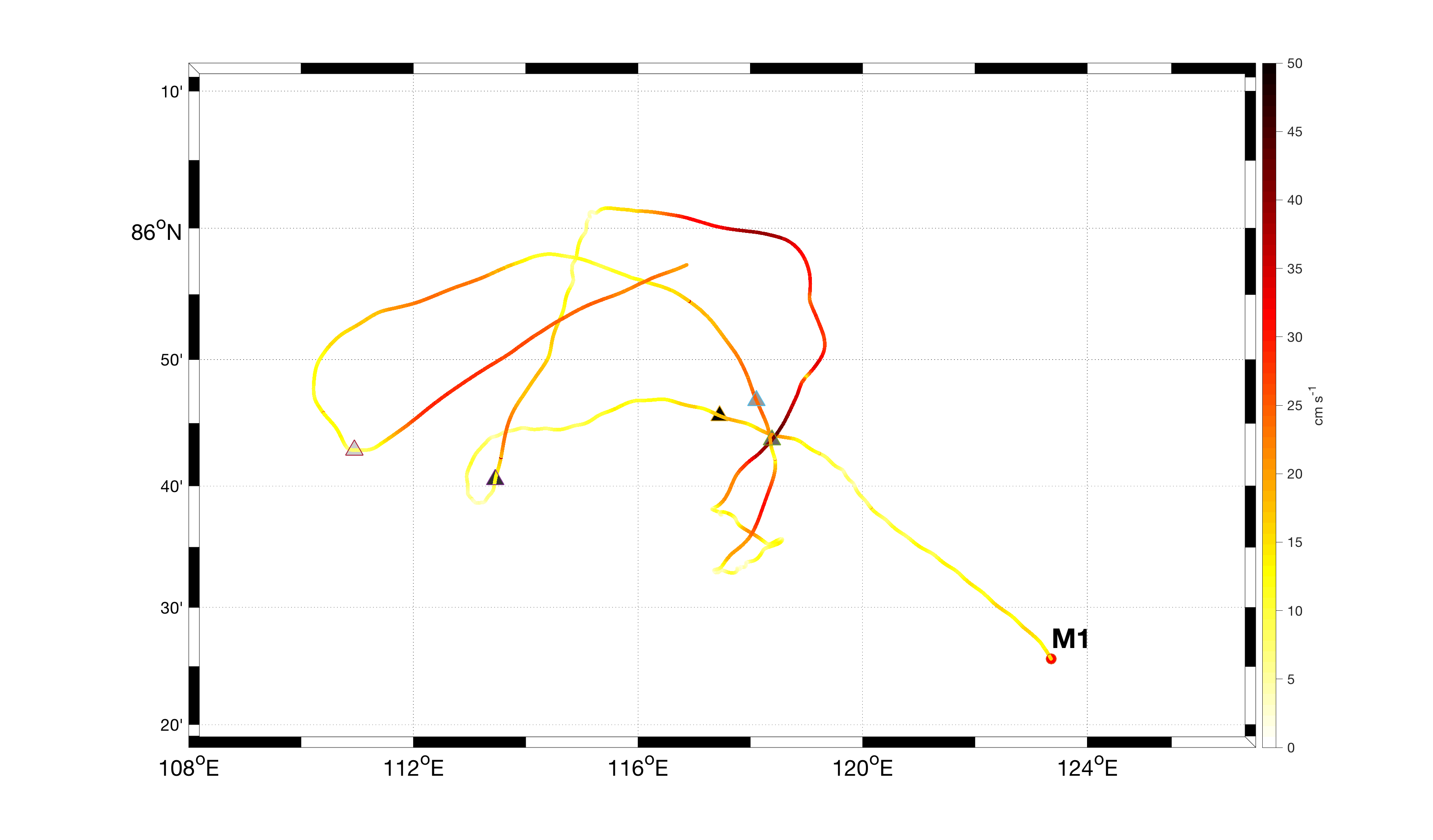
(Sub)mesoscale frontal processes
I am very fortunate to have a chance to work with the once-in-a-lifetime project, MOSAiC (the Multidisciplinary drifting Observatory for the Study of Arctic Climate). Currently I am working with the data which I and TEAM OCEAN collected during MOSAiC Leg 1. The focus is about (sub-)mesoscale T/S variabilities and frontal processes during the drift. More updates will be released upon the progress of the project.
see the MOSAiC website here: https://www.mosaic-expedition.org/
Baroclinic tides of the Hanna Shoal region
This important feature was investigated and understood during my first half of 2019. This is a direct evidence that supports the findings for the low-frequency circulation in the Hanna Shoal region. We hypothesize that this could be an important mechanism fluxing near-bottom nutrients to the euphoric layer. A manuscript regrading this finding has been submitted to Geophysical Research Letters. Stay tuned.

Circulation of the Hanna Shoal region
Hanna Shoal, on the northeastern Chukchi Sea shelf, is a remote location whose oceanography is poorly understood. As a substantial component of my PhD research, I analyzed velocity and thermohaline data from 23 moorings in the Hanna Shoal region. I found that Hanna Shoal is a dynamic area. Most importantly, the study finds that there is a year-round stratification on the eastern side of the Shoal. This stratification fundamentally shapes the local circulation. The results have been recently published in JGR: Oceans.
Read the newly published JGR paper here: PDF
Read the DSR hydrography paper here: PDF
Read the final report here: PDF
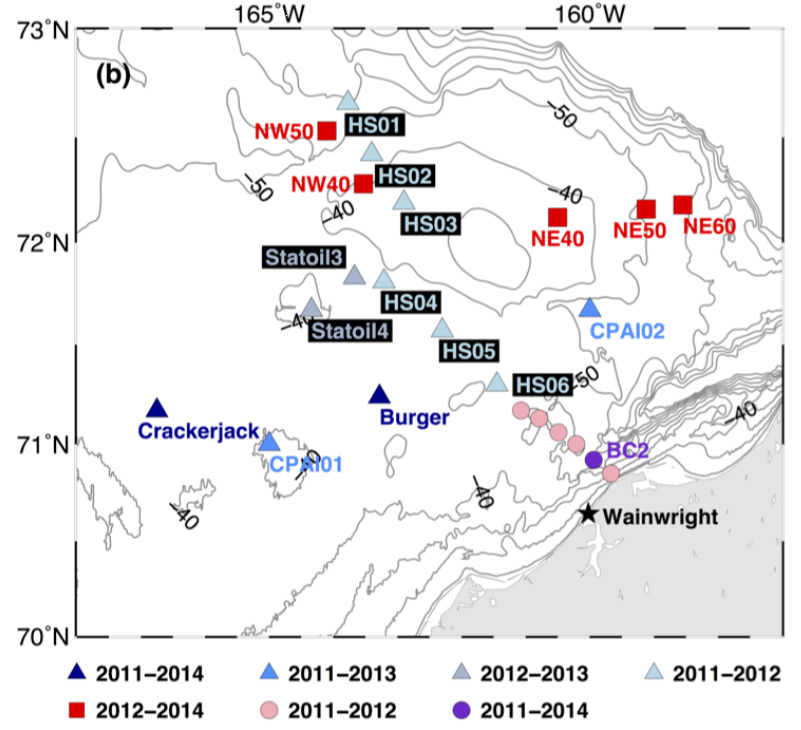
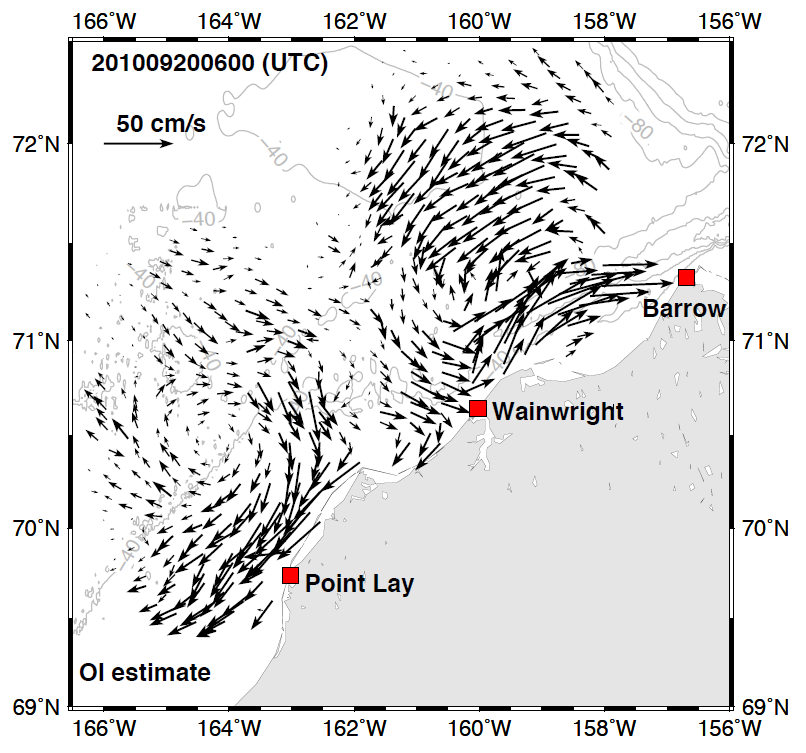
Surface currents in the Northeastern Chukchi Sea
I have nearly 10 years of experience using high-frequency radars (HFR) as a tool to study coastal oceanography and surface currents. In 2009, I collaborated with the Taiwan Navy to configure two HFR field sites. This helped guide the start of my PhD research in 2012 at the University of Alaska Fairbanks (UAF), where I analyzed HFR surface currents in the northeastern Chukchi Sea. A technical paper addressing the data processing technique of the Chukchi HFR network was published in JTECH in February 2015. Another dedicated analysis of these data had been published in JGR: Oceans in December 2017.
Read the JGR paper here: PDF
Read the JTECH paper here: PDF
Kuroshio east of Taiwan
As a research assistant in 2008, I was very fortunate to have an opportunity to manage the deployment of three moorings east of Taiwan, monitoring Kuroshio variability. Unfortunately I did not have enough time to digest the collected data sets before I moved onto my next position but still hope that someday I will have the opportunity to learn what is going on from the measurements.
Read the project final report here: PDF (written in Chinese)
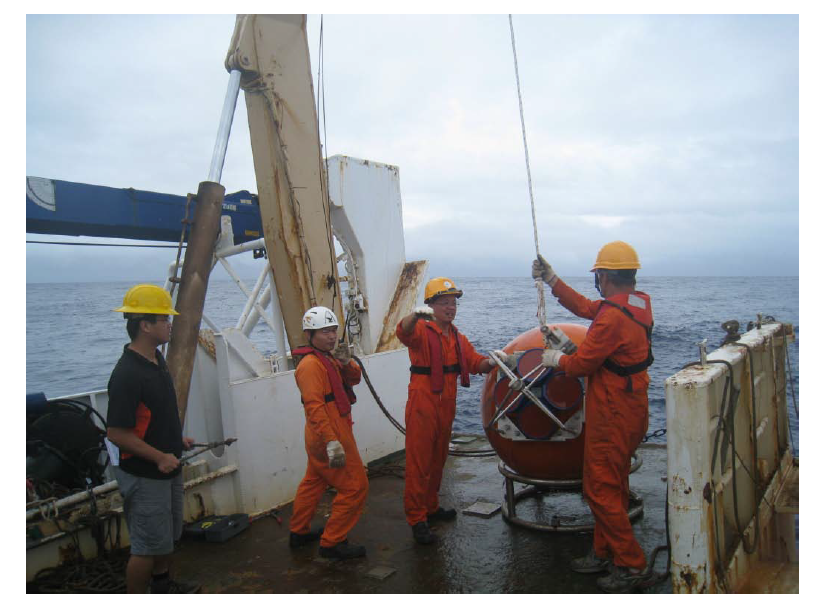
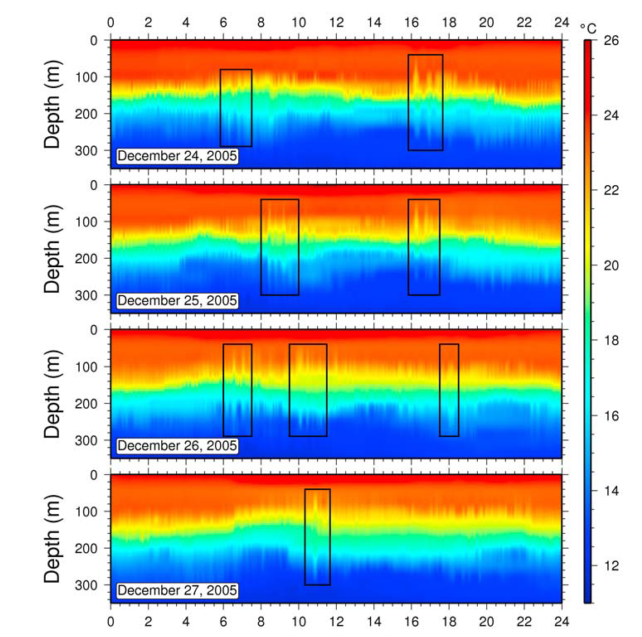
Internal waves on the continental shelf of the South China Sea
I would not call myself an internal waves expert, but studying internal waves was the first topic of my oceanographic career. I tackled a special internal wave feature with two zero-crossings in the temperature profile and concluded it was primarily due to a deepening thermocline, causing a quasi-3-layer stratification. This research completed my master’s thesis and I also co-authored two corresponding journal articles. I would like to conduct further investigations in the future.
Read the JGR paper here: PDF
Read the NPG paper here: PDF
Read my master's thesis here: PDF
